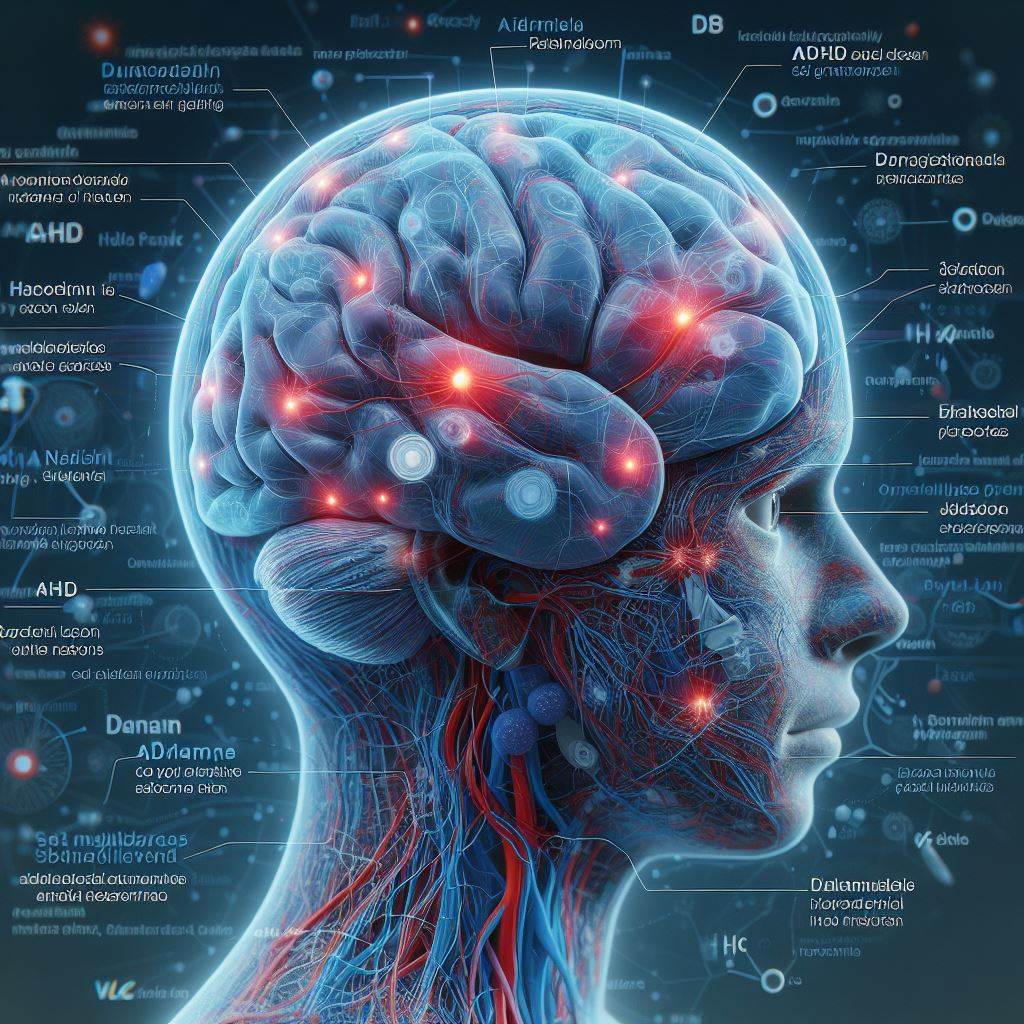The neurobiology of Attention Deficit Hyperactivity Disorder (ADHD) involves complex interactions between genetic, neurochemical, and structural factors. While the exact mechanisms are not fully understood, research has provided valuable insights into the neural underpinnings of ADHD. Here are key aspects of the neurobiology of ADHD:
**1. *Neurotransmitter Dysfunction:*
- Dopamine Dysregulation: Dysregulation of the neurotransmitter dopamine is a central feature of ADHD. Dopamine is involved in various cognitive functions, including attention, motivation, and reward processing.
- Norepinephrine Involvement: Norepinephrine, another neurotransmitter, also plays a role in ADHD. Both dopamine and norepinephrine are part of the catecholamine system and are involved in the brain’s arousal and alertness mechanisms.
**2. *Frontal Cortex Dysfunction:*
- Prefrontal Cortex Impairment: The prefrontal cortex, particularly the dorsolateral prefrontal cortex (DLPFC), is crucial for executive functions such as working memory, impulse control, and attention regulation. Dysfunction in this area is commonly observed in individuals with ADHD.
- Cortical Underactivation: Neuroimaging studies have shown underactivation of the prefrontal cortex during tasks requiring sustained attention in individuals with ADHD.
**3. *Brain Structure and Connectivity:*
- Reduced Cortical Thickness: Some studies suggest a reduction in cortical thickness in specific brain regions, including the prefrontal cortex, in individuals with ADHD.
- Altered Connectivity: Disruptions in neural connectivity, particularly within the default mode network (DMN) and the frontoparietal network (FPN), have been observed in ADHD. These networks play a role in attention, task performance, and self-reflection.
**4. *Striatal Dysfunction:*
- Striatum and Reward Processing: The striatum, a region associated with reward processing, is implicated in ADHD. Dysregulation in the reward system may contribute to impulsivity and hyperactivity.
- Role of Basal Ganglia: The basal ganglia, a group of subcortical structures, is involved in motor control and attention. Dysfunction in the basal ganglia may contribute to hyperactivity and impaired response inhibition.
**5. *Genetic Factors:*
- Heritability: There is a strong genetic component to ADHD. Twin, family, and adoption studies indicate a heritability estimate of around 70-80%, suggesting a significant genetic influence on the development of ADHD.
- Candidate Genes: Several candidate genes have been implicated, particularly those related to dopamine and norepinephrine signaling.
**6. *Environmental Factors:*
- Prenatal and Perinatal Factors: Environmental factors during pregnancy and early life, such as exposure to toxins, maternal smoking, and premature birth, may contribute to the risk of developing ADHD.
- Neurodevelopmental Impact: ADHD is considered a neurodevelopmental disorder, and disruptions in early brain development may have long-lasting effects on neural circuitry and function.
**7. *Neurochemical Interventions:*
- Stimulant Medications: Stimulant medications, such as methylphenidate and amphetamines, are commonly used to treat ADHD. They work by increasing the availability of dopamine and norepinephrine in the brain, improving attention and impulse control.
- Non-Stimulant Medications: Non-stimulant medications, like atomoxetine, work by increasing norepinephrine levels and are an alternative for individuals who do not respond well to stimulants.
**8. *Neuroplasticity and Interventions:*
- Brain Plasticity: The brain’s ability to adapt and reorganize, known as neuroplasticity, is a key factor in interventions for ADHD. Behavioral therapies and cognitive interventions aim to enhance neuroplasticity and promote more adaptive neural pathways.
- Neurofeedback: This therapeutic approach involves real-time monitoring of brain activity, allowing individuals to learn how to self-regulate their brain function. It has shown promise in improving attention and impulse control.
Conclusion:
The neurobiology of ADHD is a complex interplay of genetic, environmental, and neurochemical factors. Advances in neuroimaging and genetic research continue to deepen our understanding of the neural mechanisms underlying ADHD, paving the way for more targeted and effective interventions. A comprehensive approach that considers both biological and environmental factors is crucial in the diagnosis and management of ADHD.

